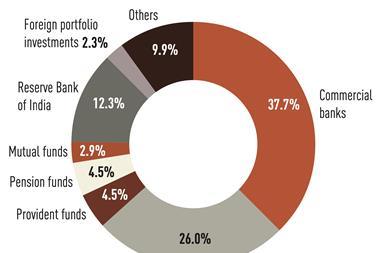Emerging markets offer a wealth of compelling investment opportunities. They represent 35% of global output and are growing fast, close to an average of 7%, driving the economic recovery in the rest of the world in the process. And Asia’s economies are leading the way, forcing international investors to reconsider their overall cautious stance towards emerging equities.
The key for investors in emerging markets is to strike a balance between companies that are beneficiaries of globalization and companies benefiting from the rise of the domestic consumer class in most of these markets. Kirk West, managing director of Principal Global Investor’s Asian business observes that many emerging market portfolios are concentrated in the mega-cap companies that provide exposure to the globalisation theme. Principal take a different approach. “While we expect the mega-caps to continue benefiting from globalisation,” says West, “they provide only half the advantages of investing in emerging markets. The most exciting place to invest in is companies that are leveraged to domestic consumption. The phenomenon of outsourcing has led to a significant transfer of jobs from developed economies to emerging markets, helping lift millions of people with scarce means into the ranks of a burgeoning middle class. This has caused a surge in domestic demand for goods and services in these economies, benefiting domestic companies in the retail, utilities, telecommunications, banking, consumer finance, real The group’s exposure to domestic consumption can be seen in the sector distribution of its emerging markets portfolio. As of March 31, 2010, they were overweight both the consumer discretionary and financial services sectors relative to the benchmark. They also had overweight positions in IT and materials. On a regional basis, the portfolio was overweight to south Asia, EMEA and developed Asia.
Typically until very recently, emerging markets investing has been characterised by boom followed closely by bust. Timing was the most important factor in the investment process, but now that element of risk has been all but eliminated. While earnings growth expectations for emerging markets are currently much higher (about 5%) than for the developed markets, those higher growth rates are now fully priced into relative market valuations, with both developed and emerging markets showing forward price/earnings ratios of approximately 14x to 15x. This implies earnings yields of 7%. This might seem somewhat conservative, but historically emerging markets traded at significant valuation discounts to developed markets. Over the past few years that discount has been eliminated, by virtue of emerging stock out-performance exceeding actual growth differentials creating a multiple expansion. West says, “It is difficult to argue strongly that emerging markets will continue to significantly outperform developed markets, especially in inflation-adjusted terms. That said, nominal returns should still be a bit higher in emerging over time due to higher inflation expectations and risk premiums for currency volatility. The Principal asset allocation team’s estimated long term equity risk premium over bonds is at about 4.5% versus core bonds or 5.5% over Treasuries. Emerging markets bond yields are currently at about 6.25%, so adding in the equity risk premium brings us to 10.75% to 11.75%, the higher end of the estimated range.
J.P.Morgan’s emerging markets team see plenty of potential in the sector on a medium term view. David Shairp, managing director and global strategist comments, “Over a two to three year horizon, Asia is still showing the greatest strength and the greatest potential for robust earnings. China remains in focus and we expect to see investors veering from worrying about China overheating to worrying about China going into recession. Our research suggests that China can continue to produce GDP growth at the 8% level and to translate that into consistent strong earnings growth. Brazil and the rest of Latin America also look attractrive.
Japanese data provider R&I Information has recently carried out a study to test the view among pension funds that emerging market stocks carry substantially more risk. Using a typical asset allocation for pension funds, they assumed a foreign stock weighting of 15%. They calculated the change in risk in the portfolio as a whole if the weighting to emerging markets was increased.
They concluded that the risk is indeed higher than for developed market equities. Whereas foreign stocks have an 18% risk factor, emerging stocks came in at 27%. “Still, considering the change in the portfolio risk at large,” says R&I, “the risk due to the inclusion of emerging market stocks is only slightly higher. For example, if 3% of the portfolio is devoted to emerging market stocks, the risk of the whole portfolio is only around 0.2 points higher than otherwise. In light of changing portfolio risk and global economic trends, pension asset managers will need to recognize anew the risk of not investing in emerging markets.”












No comments yet